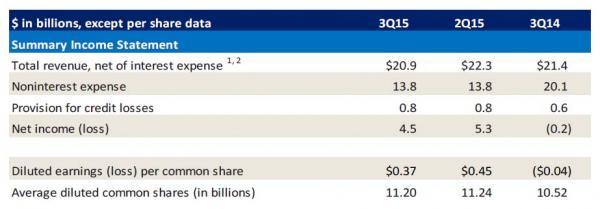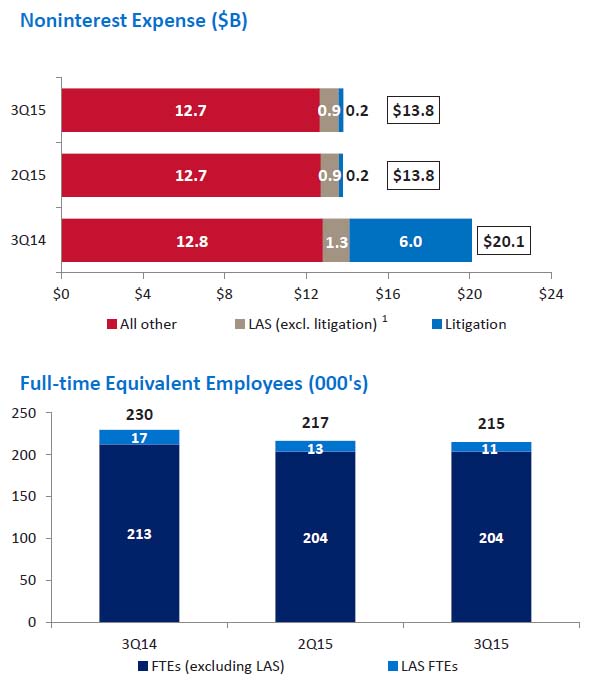While yesterday’s JPM results missed from the top to the bottom, coupled with a surprising and aggressive deleveraging of the bank’s balance sheet which has shrunk by over $150 billion in 2015 mostly on the back of a decline in deposits, Bank of America reported numbers which were largely the opposite when it printed a modest beat on both the top line with $20.9 billion in revenues (adjusted sales of $20.6Bn vs Exp. $20.5Bn), down $500 million from a year ago, and the bottom line: generating $0.35 in adjusted earnings in the quarter, 2 cents better than the $0.33 consensus estimate.

As shown in the chart above, the company’s official EPS was $0.37 but this contained the following adjustments:
As to where that all important 2 “beating” cents came from, why the usual place of course:
“The net reserve release was $126 million in the third quarter of 2015, compared to a net reserve release of $407 million in the third quarter of 2014.”
Which is odd considering this takes place in a quarter when everyone else (coughjefferiescough) is provisioning for deep credit losses.
The reason for the improvement on the expense side was cost-control, with total noninterest expenses flat at $12.7 billion, while LAS and litigation were a modest $1.1 billion. Also worth noting: BofA continue to layoff workers, which dropped from 230K a year ago to 215K in Q3, down 2K from the previous quarter. Goldman Sachs continues to be the only bank in the US which is hiring bankers.

In any event, the number was “good enough” because as a reminder, it was a year ago that BofA posted a surprising loss on the back of massive legal charges. And as we wroted previously, due to the swing from a loss to a profit, far more than AAPL, BofA would be the single biggest earnings swing factor in Q3 not only for the financial sector but also for the S&P as BofA alone will contribute to about 1.4% of the Y/Y change in S&P earnings!







